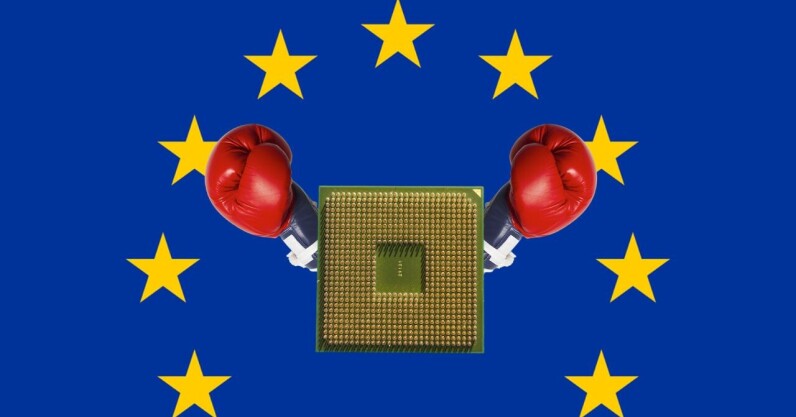The EU’s Chips Act enters into force: Here’s what it means
The EU’s Chips Act finally entered into force yesterday (September 21), after spending over a year winding its way through the legislature. The landmark law is designed to bolster the bloc’s domestic supply, sovereignty, and competitiveness in the semiconductor sector.
Semiconductor chips are the backbone of all electronic products — and as such, theyr’e fundamental components in everything from smartphones and cars to applications in healthcare, clean energy, and communications. This means chips are also at the centre of geopolitical interests and the global rally for technological supremacy.
“The global race for leadership in chips is a fact and Europe must secure her active part in it,” said Věra Jourová, the Commission’s VP for Values and Transparency. “In the EU we have great talent and research, but we are missing out in linking those advantages with production and rollout of the technology.”
Meanwhile, shortages and frictions in the semiconductor supply chain (especially heightened during the pandemic), exposed the bloc’s heavy reliance on a few foreign suppliers — China and Taiwan for manufacturing, and the US for design.

Against this backdrop, the Chips Act has three main objectives: to strengthen domestic manufacturing capacity, boost the European design ecosystem, and support scaleup and innovation across the entire value chain.
Overall, the EU aims to mobilise €43bn in public and private investments, and bring its share in global production capacity from 10% to 20% by 2030.
Three key pillars of action
1. The Chips for Europe Initiative
The Initiative will facilitate the “lab to fab” process and bridge the gap between research and industrialisation. It will receive €3.3bn in EU funding alongside capital from member states. It will support actions including the development of advanced pilot production lines and quantum chips, and the creation of a Chips Fund to provide easier access to debt financing and equity.
2. Boosting investment
To ensure security of supply and boost production capacity, the act will incentivise private and public investments in manufacturing facilities for chipmakers and their suppliers.
3. Coordination
The act has established a coordination mechanism between member states and the Commission to boost collaboration, monitor supply, estimate demand, and trigger a “crisis stage” if necessary. A pilot semiconductor alert system has already been set for shareholders to report supply chain disruptions.

“Investment is already happening, coupled with considerable public funding, and a robust regulatory framework,” said Commissioner Thierry Breton.
“We are becoming an industrial powerhouse in the markets of the future — capable of supplying ourselves and the world with both mature and advanced semiconductors. Semiconductors that are essential building blocks of the technologies that will shape our future, our industry, and our defence base.”
The EU’s Chips Act enters into force: Here’s what it means Read More »













